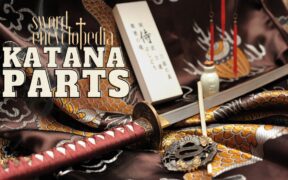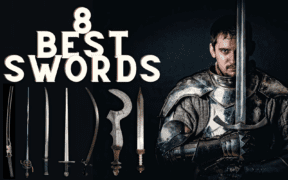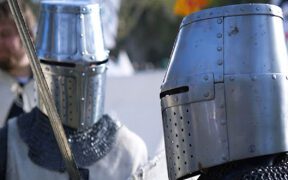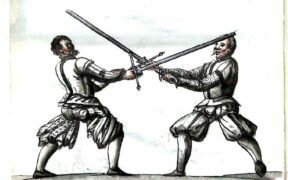All Sword Parts and Their Anatomy Explained
NO AI USED This Article has been written and edited by our team with no help of the AI
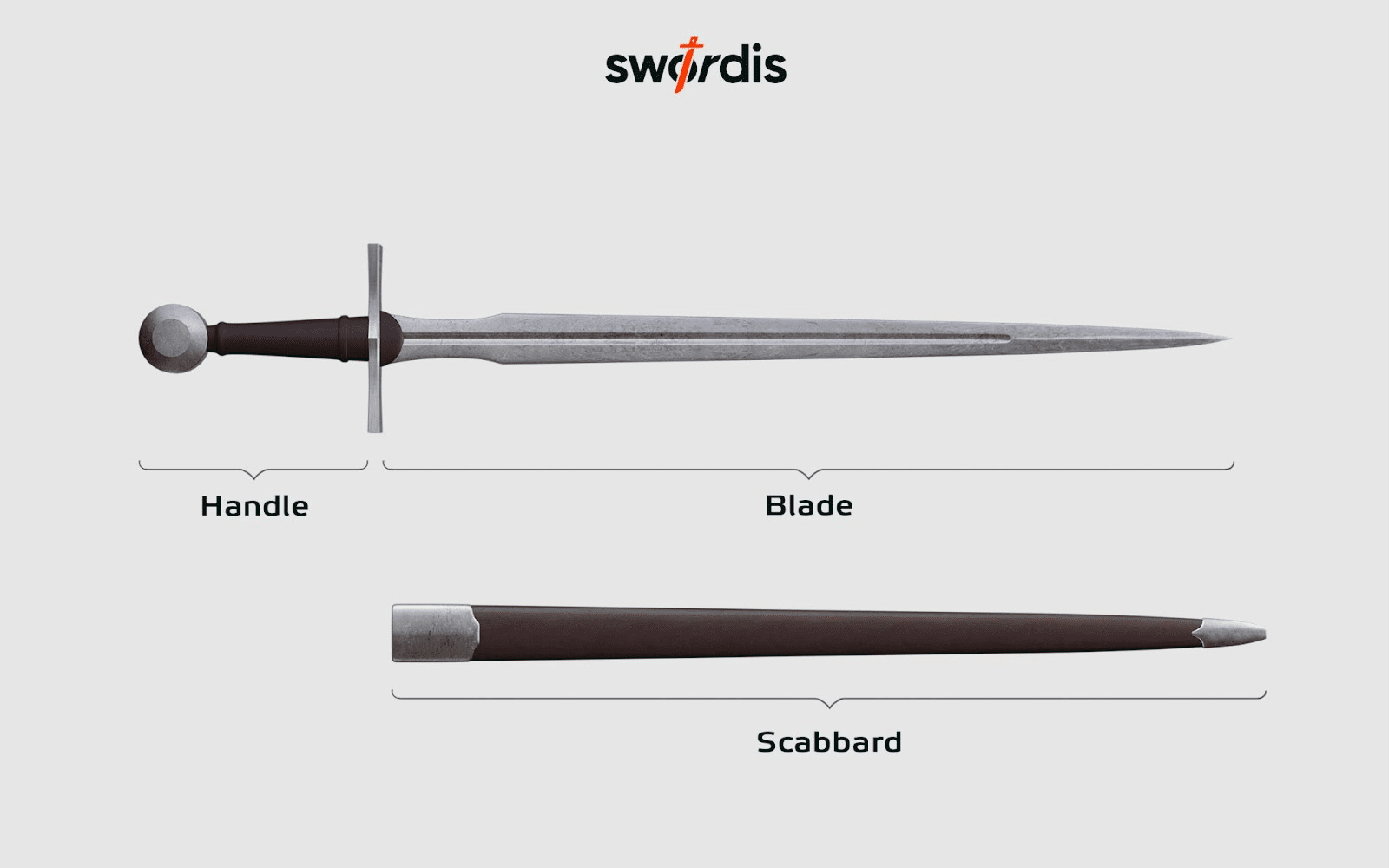
The various parts of a sword are important to its integrity, elevating it not only in terms of the sword’s functionality but also contribute to its historical background. Having existed for more than 5,000 years, each part has evolved to adapt to trends and battlefield needs of the time.
This article examines the various parts of some of the most popular swords around the world along with their functions.
Essential Parts of a Sword
Generally, almost all swords consist of three major parts:
- Blade
- Hilt
- Scabbard
While swords vary in design based on the combat requirements and trends of the time, these three parts form the structural core of most swords across various cultures throughout history. Although similar in structure, these components often have unique names based on the region’s combat styles and aesthetic preferences.
Blade
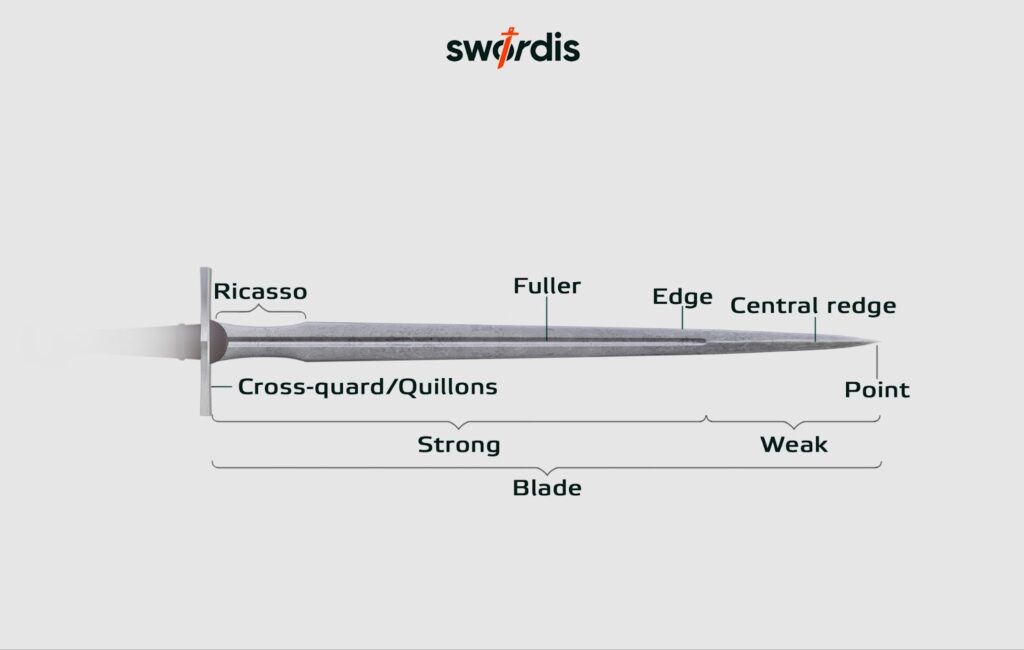
1. Tip – The blade’s tip varies depending on its intended use, such as the rounded tip of a Viking sword, sharp point of a rapier, and the intermediate tip of the Roman gladius.
2. Edge – The sharpened side of the blade, which may be double or single-edged, is used for cutting, slashing, thrusting, and more.
3. Fuller – A groove along the blade that reduces its weight and improves balance, handling, and flexibility.
4. Ridge – A reinforced central central ridge that runs toward the blade’s tip, adding rigidity and strength.
4. Ricasso – The unsharpened section near the guard, providing the wielder an area to grip closer to the blade to allow more precise strikes.
5. Shoulders – The point where the blade transitions to the tang.
6. Tang – The unsharpened portion of the blade that extends into the handle for better balance and stability. Designs can vary, affecting weight distribution and grip security.
7. Forte – The stronger and thicker half of the blade near the hilt, offering greater strength and control. It is also known as “the strong.”
8. Foible – The blade’s upper half which is more tapered, optimized for agility and precision. It is also known as “the weak.”
Hilt
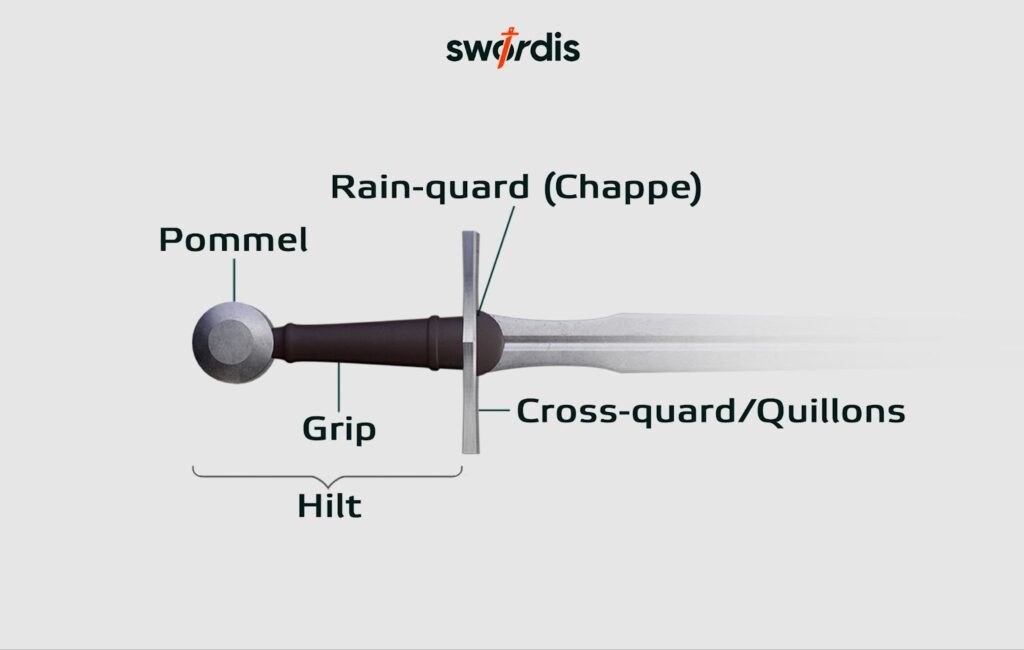
1. Pommel – A metal cap at the end of the hilt that secures components and acts as a counterweight to help with balance when wielding the sword.
2. Grip/Handle – The grip or handle varies in style and is tailored to the blade’s length and design. It can be made from various materials including wood and wrapped in leather or cord.
3. Guard – The guard protects the wielder’s hand and varies in size. In European swords, crossguards with quillons are common to enhance protection.
4. Quillons – Extensions from the guard, varying in shape and size. They aid in defensive techniques by catching or blocking the opponent’s blade.
5. Ferrule – Metal bands on the hilt that improve tightness and stability of other components.
6. Tang Nut – Secures the tang within the hilt. It is less prevalent in swords with peened pommels as the tang is hammered for a secured fit.
Scabbard
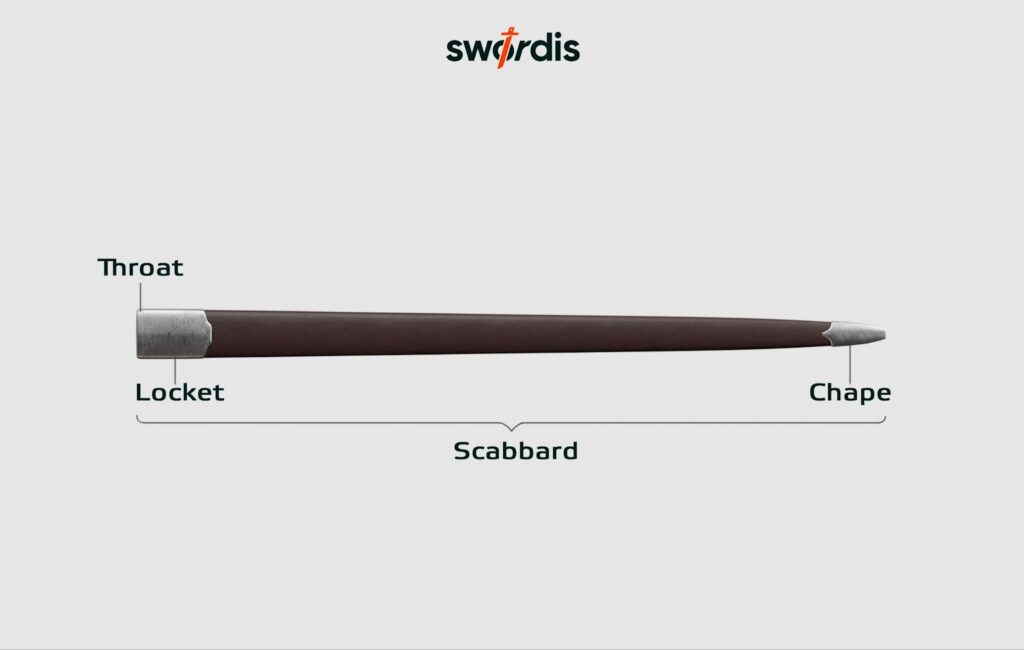
1. Chape – A protective or decorative cap on the scabbard’s tip, designed to enhance durability, prevent wear, or for better aesthetics.
2. Locket – A wide metal piece at the scabbard’s opening, protecting the blade against environmental elements and helps to secure the sword in place.
3. Throat – The scabbard’s entry point ensures the blade’s protection during unsheathing and secure placement when sheathed.
Types of Other Sword Parts
Swords from around the world share similar components but can differ in structural design and materials affecting how they are tailored to their combat purpose and cultural context.
Japanese Sword Parts
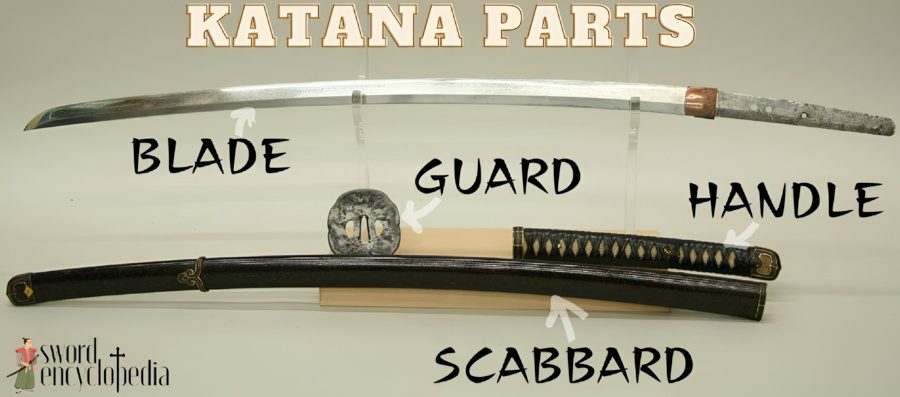
Iconic samurai swords, such as the katana or wakizashi, are renowned for their meticulous craftsmanship and symbolism.
- Nagasa (Blade) – The most important part of the sword, with up to 18 subcomponents.
- Tsuka (Handle): The handle, with up to 7 components, such as the menuki (ornamental grips) and samegawa (ray skin wrap) is just as complex as the blade.
- Saya (Scabbard) – A wooden sheath that secures and protects the blade, often with a lacquered finish and featuring detailed fittings.
Chinese Sword Parts
Chinese swords are divided into two major types: the straight double-edged jian and the curved, single-edged dao that emerged much later.
Jian Parts

- 剑体, jiàn tǐ (Blade) – The blade is straight and differs in design. It can have 2, 4, or 8 sides, providing different structural and aesthetic characteristics.
- Jianba (Hilt) – Typically one-handed and features a handguard (护手/剑格, hù shǒu / jiàn gé) that often feature traditional designs.
Dao Parts

- 刀体, dāo tǐ (Blade) – Typically straight or slightly curved, the single-edged steel blade is ideal for powerful slashing. A groove along the blade can reduce the sword’s weight and improve balance.
- 刀把, dāo bǎ (Handle) – Handles can be one- or two-handed, wrapped in various designs using cotton, leather, or silk. They can also feature a round pommel (刀把顶饰, dāo bǎ dǐng shì) and a lanyard hole (腰刀系子, yāo dāo xì zi)
Other Sword Parts from Around the World
Apart from these three sword groups, there are many other swords worldwide that reflect the culture and adaptations of the region, giving each sword its unique style and use.
Examples include the Turkish kilij’s yelman with a broad, flared tip, the Indian pata’s gauntlet-like handle, and the Persian shamshir’s pistol-grip pommel.
Materials for Sword Parts
Each sword component requires materials that fit its purpose. Oftentimes, these materials are chosen for their specific attributes such as durability, resistance to corrosion, toughness, and more.
Blade
- High Carbon Steel – Ideal for functional, sharpened blades, regional varieties include tamahagane (East Asia) and wootz or Damascus steel (Central and West Asia).
- Stainless Steel – Common in decorative or display pieces, this modern steel has higher rust and corrosion resistance.
- Alloy Steel – Alloys such as spring or tool steel are known for their resilience and flexibility.
Hilt
- Guard and Pommel – Made from metals such as copper, iron, bronze, brass, steel, and alloy for durability and aesthetics.
- Handle – Constructed from durable materials such as wood, bone, ivory, and buffalo horn and wrapped in leather, wire wrap, ray skin, cotton, silk, for better grip and comfort.
Scabbard
- Wood – Ideal for safe storage and rust resistance. It can be wrapped with leather, rattan, or ray skin for added durability.
- Leather – A leather sheath is lighter and more flexible, making it easier to carry.
